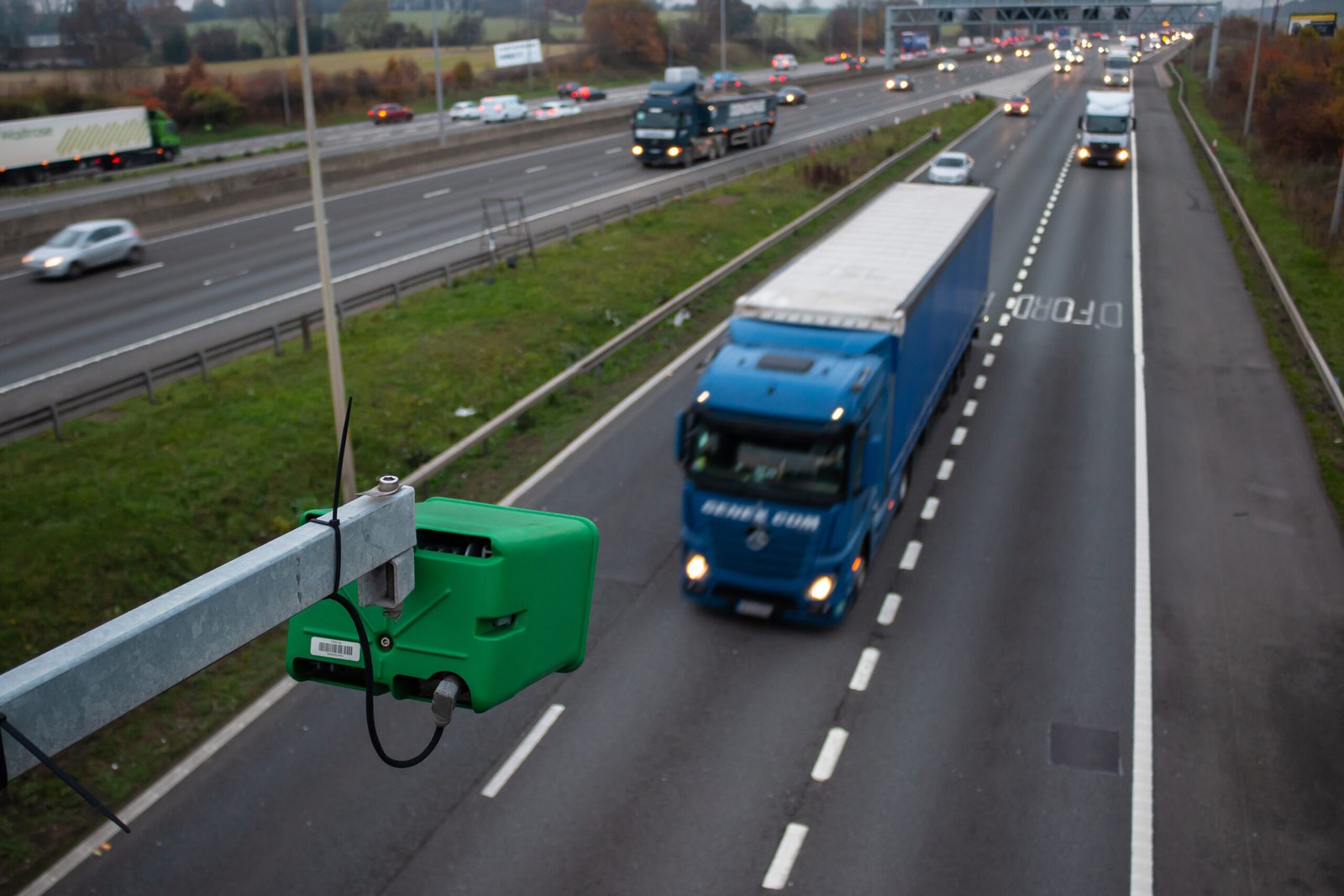How License Plate Recognition Systems Are Transforming Toll Collection and Highway Management
License Plate Recognition (LPR) systems have revolutionized toll collection and highway management, providing efficient and automated solutions for vehicle identification, traffic monitoring, and revenue collection. By using advanced optical character recognition (OCR) and image-processing technology, LPR systems read license plates in real-time, transforming traditional toll booths and traffic control systems. This evolution brings several benefits, including reducing congestion, increasing operational efficiency, and improving the overall management of highways.
This article explores how LPR systems are shaping toll collection and highway management, the advantages they offer, and their integration with technologies such as speed enforcement camera systems.
1. The Basics of License Plate Recognition Systems
LPR systems use cameras to capture images of passing vehicles, identifying their license plates and converting them into machine-readable text through optical character recognition (OCR) software. This data can then be processed for various applications, including:
- Toll Collection: Automatically charging vehicles based on their license plate information.
- Traffic Management: Monitoring traffic flow, vehicle classification, and travel patterns.
- Law Enforcement: Detecting and tracking stolen or unauthorized vehicles.
The adoption of LPR technology in toll collection and highway management has opened new avenues for automating traditionally manual processes and has improved both traffic flow and revenue collection methods.
2. The Shift from Manual to Automated Toll Collection
Traditional toll collection systems require vehicles to stop at toll booths, where a fee is paid either manually or through electronic transponders. These systems are prone to inefficiencies, such as long queues, slow payment processes, and operational bottlenecks, particularly during peak hours.
With the introduction of LPR systems, toll collection has become fully automated, allowing vehicles to pass through toll points without stopping. LPR cameras capture the vehicle’s license plate, automatically associating it with an account or billing the vehicle’s owner directly.
2.1 Advantages of Automated Toll Collection with LPR
- Reduced Congestion: Since vehicles no longer need to stop to pay tolls, traffic congestion at toll plazas is greatly reduced.
- Increased Efficiency: Automated toll collection minimizes human error and speeds up the entire process.
- Lower Operating Costs: Without the need for toll booth operators or physical transponders, maintenance and operational costs decrease.
- Environmentally Friendly: Vehicles can maintain a steady speed through toll points, reducing fuel consumption and emissions caused by frequent braking and acceleration.
2.2 Enhancing Toll Collection with Speed Enforcement Camera Systems
Integrating LPR systems with speed enforcement camera systems enables the detection of speed violations in toll lanes. By capturing both the license plate and vehicle speed, authorities can ensure compliance with speed limits, especially in areas where toll booths used to create bottlenecks.
These systems work by synchronizing license plate recognition with speed detection cameras to monitor vehicles passing through toll points at excessive speeds. This ensures that toll roads remain safe and that drivers adhere to traffic regulations.
3. LPR Systems and Open Road Tolling (ORT)
One of the most significant transformations in toll collection is the emergence of Open Road Tolling (ORT), which leverages LPR systems to create seamless, barrier-free toll collection points. In ORT, drivers do not need to slow down or stop for toll booths; instead, their license plates are captured by overhead LPR cameras as they drive through designated toll lanes at highway speeds.
3.1 Benefits of Open Road Tolling
- Faster Travel Times: ORT reduces the need for vehicles to stop, leading to smoother traffic flow and shorter travel times.
- Reduced Traffic Accidents: Since there are no physical toll barriers, the risk of rear-end collisions or accidents near toll plazas decreases significantly.
- Improved Driver Experience: The convenience of paying tolls automatically without slowing down enhances the overall travel experience for drivers.
ORT has become particularly prevalent on high-traffic highways, where minimizing congestion is a priority. The ability to link toll collection to LPR systems allows operators to efficiently manage traffic while ensuring that toll revenue is collected accurately.
4. Enhancing Highway Management with LPR Systems
In addition to transforming toll collection, LPR systems play a critical role in improving overall highway management. By providing real-time data on vehicle flow, traffic patterns, and roadway conditions, these systems help authorities make informed decisions that enhance the safety and efficiency of highways.
4.1 Real-Time Traffic Monitoring
LPR systems provide continuous monitoring of traffic conditions, capturing license plate information that can be analyzed to assess traffic volumes, peak hours, and vehicle classification (cars, trucks, motorcycles). This data is invaluable for traffic authorities, as it allows them to:
- Monitor Congestion: Identify high-traffic areas in real-time and deploy traffic control measures as needed.
- Plan Infrastructure Development: Use traffic data to make decisions about road expansions, maintenance, and infrastructure upgrades.
- Optimize Traffic Flow: Implement dynamic toll pricing based on traffic conditions, adjusting rates during peak hours to encourage off-peak travel.
4.2 Law Enforcement and Security
LPR systems are also essential tools for law enforcement, enabling authorities to track stolen or wanted vehicles, monitor for unauthorized use of toll roads, and even identify vehicles involved in criminal activities. By integrating LPR data with vehicle databases, law enforcement can:
- Set up Automated Alerts: Flag vehicles with outstanding violations, expired registrations, or criminal involvement.
- Support Investigations: Use license plate data to trace vehicles involved in traffic incidents or crimes.
The integration of LPR systems with speed enforcement camera systems further strengthens the ability of law enforcement to maintain safety on highways. By monitoring both license plates and vehicle speeds, these systems ensure compliance with speed limits and traffic regulations across large highway networks.
5. Best Practices for Implementing LPR Systems in Toll Collection and Highway Management
While LPR systems offer significant benefits, their successful implementation requires careful planning and adherence to best practices. Key considerations include:
5.1 Camera Placement and Calibration
The effectiveness of LPR systems depends on proper camera placement and calibration. Cameras must be positioned to capture clear images of license plates under various lighting and weather conditions. Additionally, regular calibration ensures that the cameras maintain accuracy over time, minimizing errors in license plate recognition.
5.2 Data Privacy and Security
Given the sensitive nature of the data collected by LPR systems, privacy and security are paramount. Toll operators and highway authorities must implement robust encryption protocols and secure data storage to protect personal information from unauthorized access. Compliance with regional privacy regulations, such as the General Data Protection Regulation (GDPR), is essential for ensuring the ethical use of LPR data.
5.3 System Integration and Interoperability
For LPR systems to deliver their full potential, they must be integrated with other traffic management systems, such as speed enforcement cameras, vehicle databases, and traffic control centers. Ensuring interoperability between systems enables seamless data exchange and allows authorities to respond more effectively to traffic conditions and incidents.
5.4 Continuous Monitoring and Maintenance
LPR systems require ongoing monitoring and maintenance to ensure they function correctly. This includes regular system updates, software improvements, and hardware maintenance to optimize performance and minimize downtime.
6. Challenges in Implementing LPR Systems for Toll Collection
Despite the many benefits, there are challenges associated with implementing LPR systems for toll collection and highway management. These include:
- Cost of Infrastructure: Installing LPR cameras and integrating them with existing systems can be expensive, particularly in large highway networks.
- Data Accuracy: LPR systems may face issues with license plate readability due to factors such as dirty or damaged plates, extreme weather conditions, or vehicle speed.
- Public Resistance: Some drivers may express concerns about privacy and the tracking of their movements, requiring public awareness campaigns to address these issues.
Conclusion
Automatic License Plate Recognition system have transformed toll collection and highway management by automating processes that once relied on manual intervention. By enabling seamless toll payments, reducing traffic congestion, and improving safety, LPR systems have become a cornerstone of modern highway infrastructure. Their integration with other technologies, such as speed enforcement camera systems, further enhances their value in ensuring compliance with traffic regulations and improving overall road safety.
As LPR technology continues to evolve, it will play an even more significant role in shaping the future of toll collection and highway management, paving the way for smarter, more efficient transportation systems.






